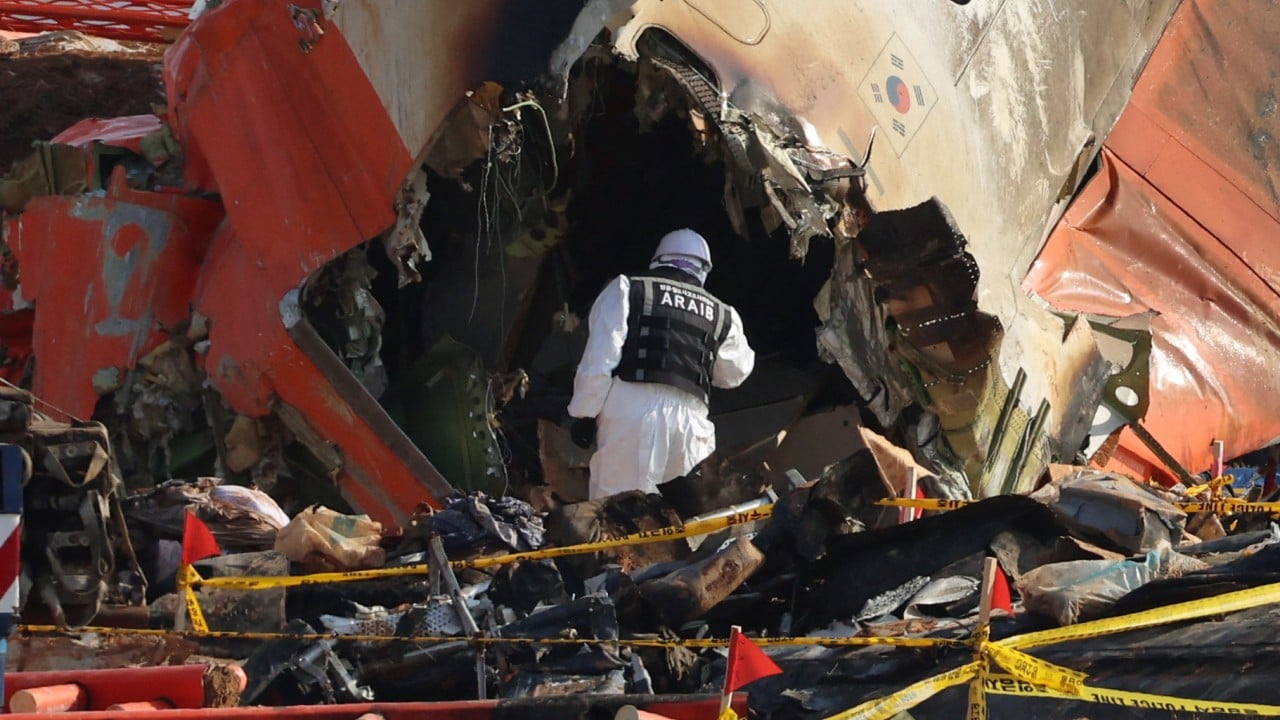The placement of soil over the concrete foundation of an antenna at South Korea’s Muan Airport is under scrutiny for potentially contributing to Sunday’s fatal Jeju Air crash, prompting experts to call for a comprehensive review of airport layouts nationwide.
Advertisement
MBC-TV reported on Thursday that 19 solid concrete pillars, used as structural supports, were found embedded within the raised embankment, or bern, that served as the foundation for an aircraft guidance antenna at Muan Airport in South Jeolla Province
Jeju Air flight 7C2216, travelling from Bangkok, had attempted a wheelless or so-called belly landing amid undercarriage issues suspected to be caused by a bird strike, causing it to skid and crash into the bern, located some 250 metres beyond the runway.
Upon impact, the plane exploded in a massive fireball, killing 179 of the 181 people on board
The concrete pillars, installed in 2007 when the airport opened, were covered with soil to meet local standards requiring such foundations for aircraft guidance antennae to be buried in soft ground, Paek Seung-joo, professor of disaster and fire protection at the Open Cyber University of Korea, explained on Thursday.
Advertisement
The bern was originally designed to raise the height of the guidance facilities to align with the sloped runway’s end.

